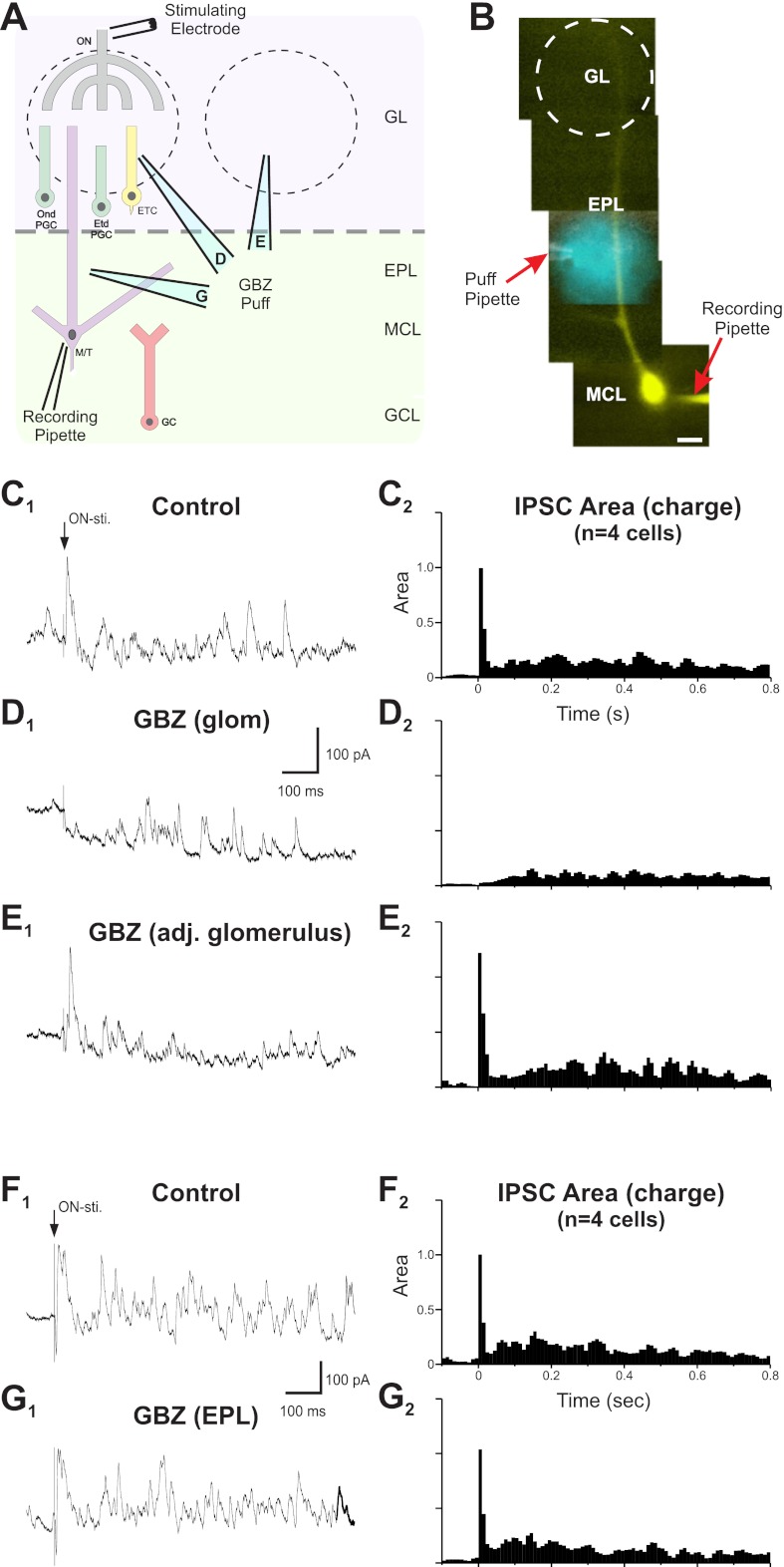Fig. 2.
ON stimulation engages intraglomerular circuits to generate short-latency, summating IPSCs in MCs. A: schematic of the experimental setup indicating different locations of pipettes used to puff GBZ. B: a LY-filled MC superimposed with a bright-field image showing the puff pipette used to deliver GBZ or fluorescent dye into the EPL to assess the spread of the puff. C1, D1, and E1: voltage-clamp recordings (Vh = −10 mV; internal solution contained QX-314, Cs2+, and LY; bath contains aCSF) of a MC response to ON stimulation. C2, D2, and E2: normalized population peristimulus time histograms (PSTHs) of the IPSC integrated area averaged from four cells. C: control. In aCSF, ON stimulation evoked an initial EPSC followed by a rapid onset barrage of IPSCs and then lower-frequency IPSCs. D: Glomerular injection of 100 μM GBZ abolished early IPSCs and attenuated late IPSCs. E: Injection of GBZ into an adjacent glomerulus had no influence on early or late IPSCs. F1 and G1: voltage-clamp recordings in a separate experiment (Vh = −10 mV; internal solution contained QX-314, Cs2+, and LY; bath contained aCSF) of a MC response to ON stimulation. F2 and G2: normalized population PSTHs of the IPSC integrated area averaged from four cells. F: control. In aCSF, ON stimulation evoked an initial EPSC followed by a rapid onset barrage of IPSCs and then lower-frequency intermittent IPSCs identical to the previous control cells. G: GBZ injected into the EPL. Early IPSCs were not influenced by the injection of GBZ into the EPL below the glomerulus containing the dendrite of the recorded MC. Late IPSCs were slightly attenuated (11% reduction).

